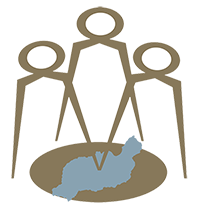Thanks to DIGITAL LANCELOT
In the Archipelago as a whole, care indicators maintain a favorable evolution of decline, with a decrease of 5.7% in the daily average of occupied conventional hospital beds and 19.3% in the number of occupied ICU beds
The Ministry of Health has today updated the health alert levels after the epidemiological report of the General Directorate of Public Health with consolidated data as of February 23. The report specifies the evolution of the health indicators due to COVID-19, which allows the island of Tenerife to be lowered to level 3, after the improvement of its epidemiological indicators.
The rest of the islands maintain their current alert levels. This means that Gran Canaria remains at alert level 4; La Palma, Fuerteventura, El Hierro and La Gomera remain at level 3; and Lanzarote (where La Graciosa is epidemiologically included) at level 2.
Tenerife goes to level 3 due to the improvement of the care impact indicators in the last 14 days, passing the hospital occupancy of beds on the ward in the last two weeks from a high risk level to a medium level, while the occupancy of ICU beds decreases to medium risk level. However, the evolution of the indicators will be closely observed in case the slightly upward evolution of the AI at 7 days in the last week is maintained and has an impact on the care capacity indicators. The level change will take effect at 00:00 this Friday, February 25 (on the night of Thursday to Friday).
The evolution of the epidemiological indicators in the rest of the islands still does not present a situation of sufficient stability in the improvement of the data to propose a decrease in level. It must be taken into account that the health alert levels are determined by the Ministry of Health based on the epidemiological and healthcare indicators that are reached weekly.
In the Autonomous Community as a whole, between February 15 and 21, 6,637 new cases of COVID-19 were reported, which represents an increase of 28.4% in the daily average of new cases in relation to the week previous. Data that respond to a 28.4% increase in the Cumulative Incidence (AI) at 7 days in the Canary Islands. From a weekly average of 237.6 cases per 100,000 inhabitants, it went to 305 cases per 100,000 inhabitants. this week. All the islands are at a very high risk level in this indicator, except for Lanzarote, which remains at a high risk level.
In the AI at 7 days in people over 65 years of age and in the AI at 14 days, all the islands are at very high risk, although the first of the indicators registers a decrease of 6% in the whole of the Archipelago, being La Gomera is the one that registers the greatest decrease. In the case of AI at 14 days, it increases by 3% in the whole of the Archipelago. La Palma and Fuerteventura are the only two islands that register a rise in the AI indicator to 7.
Healthcare indicators
Care indicators show a favorable evolution and the daily average number of occupied conventional hospital beds decreases by 5.7% compared to the previous week and with an average occupancy rate of 10.5%, it is at high risk.
The percentage of occupation in Gran Canaria and La Palma is at a high risk level; in Tenerife and Fuerteventura at medium risk; La Gomera and El Hierro at low risk; and Lanzarote in controlled circulation.
The number of occupied ICU beds maintains the downward trend, decreasing by 19.3% compared to the previous evaluation. The percentage of occupation in the whole Archipelago is 14.1%, placing it at medium risk. Gran Canaria is at a high risk level, Tenerife drops to a medium risk level, Fuerteventura and La Palma rise to a low risk level, while the rest of the islands remain in controlled circulation.




